#Tiangong 2
Text
China's Space Program Setbacks: A Look at the Country's Failed Missions
China has made remarkable strides in space exploration over the past few decades, launching a series of missions that have captured the world’s attention. However, there have been some failures along the way, and China has experienced its fair share of setbacks and disappointments.
One of China’s earliest space failures occurred in 1995, when the country attempted to launch its first Long March…

View On WordPress
#Chang&039;e-4#China#deep space exploration#failures#Long March#Mars Rover#space program#Tiangong-1#Zhuque-2#Zhurong
1 note
·
View note
Text
Bunny laoshi’s 1005 birthday CPNs Part II 🎂🎉
part one is here. this covers xz studio’s birthday video and all the clownery that came with it. this day is truly for celebration and i hope all of us are gonna have a good day~

a conversation that’s kinda loud is where the first part of the video was shot, and more importantly, when. because compared to the other sections of the edit, it appears to be his personal time that was added in. and the rest, with them taking photos, those are deliberately for the birthday material.
I thought this was somewhere in IM too, but it’s actually in Beijing. It’s confirmed by the photo he shared on his weibo. The place is at Lianquan Xianggu Natural Scenic Area Tiangong Cave📍Huairou District, Beijing. There are “reviews” from people who visited and said : “Highly recommended as a great place to get close to nature. There are very few people and there are many routes to choose from. No matter what your physical level, you can play!”

So i guess it makes sense for ZZ to visit. But when was this? I’m seeing 2 speculations on when this could have been. However the common denominator is that WYB was with him in this trip. It’s a place where they will not be recognized that much and no crowds.
OPTION NUMBER 1 : September
The theory is simply lining up the date when they were both in Beijing. GG allegedly went back to Beijing on 9/23 to 9/27 for work. Since he has other commitments other than shooting the movie. If you remember, he had a couple of livestreams and shoots. His schedule lined up with WYB who had no public itinerary on 9/26-9/27. So this could be the time window when they went hiking & exploring. Maybe WYB had his camera with him too and they both took pictures.
OPTION NUMBER 2 : August
This one has more clues to it and the guess is 8/14-8-15 which is free time for both of them. 8/13 was also when the mysterious driver was spotted so there’s that. The one who restored the cake mentioned to count the number of the sheep and it should be 32. Also it’s called something like a Beijing Camping cake and the plan for it ( with photos ) was shared 8/15 since this person didn’t know it’s for XZ. However the“original” one who made the concept is from Hangzhou which I already talked about. There are also posts from other people way before this material came out that they did see XZ around that time in the area. Remember there are some parts of LOCH done in Beijing. Tho they said that the filming site was very strict and closed off.
So anyway, I really believe that this was some sort of a joint celebration for them even it’s not 1005. I mean, why would his cast mates celebrate it with him that early??? Unless they both know that the two of them will be busy in the next couple of weeks so why not celebrate it now. While we’re out here camping 🏕️

This photo too, when i first saw it i expected for the XZS bday edit to have the scene where they sang for him. BUT NO. They shared a different “birthday moment”. I’m looking at this and thinking — maybe they didn’t want to share this private moment. They are aware of how eagle eyed CPFs can put things together and notice stuff with photos, all the more in a video. I’m leaning more towards the fact that it’s private and they wanna keep this between.
We could all be wrong about this. As with all CPNs, more clues come out as the days & months go by.
Moving on….
Is this the new favorite mini fan? LOL. I mean the CQL couple fan they have will always have a special place but it’s nice to see him have some “upgrade”.

We are seeing that again! P1 and P3 are a nod to how the sunrise is seen from the space station. P2 which is from XZS video looks like it’s a nod to that too but in a different way.

The whole feel of the vlog too, some of the cuts have that “Like The Sunshine” vibe to it. It’s a common reaction from some turtles, especially if you put the lyrics side by side with some of the stills. You can easily cut the scenic shots and use LTS as the background music and it will fit.

Watching the starry sky with the wild beasts. What is your name, in the shadows. Waking up in the night, silent like me. We lit the bonfire while we chatted. Time sneaks by, falling like flower petals
I have traveled a long way, you have dreamed a long time. If we can exchange our sincere hearts, then we can get through winter. Many lonely nights drift like fallen leaves: But it always finds a way and is always new on the branches. We will meet again, like the world will go on as usual
I have a firefly for you in the palm of my hand. It's some happiness picked up along the way. What is your name, how gentle is your name. Please tell me when the night breaks. We lit the bonfire while we chatted. Time sneaks by, falling like flower petals
Tell me this doesn’t match. 🙃🙃🙃 Their works really complement each other.
I can mention some other elements in the video like the windmills again & that cut with the violin/symphonic sound that wyb just mentioned in his vogue interview. I mean, if you clown hard enough I bet you can connect everything to a candy. But the topics I’ve mentioned here are what’s mostly talked about.
-END.
P.S: I can relate to this so much. The state of turtles right now 😂😂😂

#yizhan#bjyx#there is no science here i’m just clowning like i always do#omg this day is so busy i can’t even take a break lol
124 notes
·
View notes
Text

Nova V'ger, from Campaign 2 : Aerois, by High Rollers D&D.
"Nova is a happy-go-lucky scholar who dreams of travelling into space. She travels with Tiangong : A mysterious sword that gives her the powers of a Hexblade Warlock. Fiercely intelligent, but not very world-wise!", from Nova's character bio.
10 notes
·
View notes
Note
Top 10 space stations currently in orbit?
Here are the stations that are not on fire:
International Space Station (ISS)
Tiangong (Chinese space station)
Starlink (American space station)
Kiwi (Japanese space station)
Znamya-2 (Russian space station)
Tsyurup-2 (Russian space station)
Starliner (United States space station)
StarTrack (Russian space station)
The Chinese space station (Tiangong-1)
14 notes
·
View notes
Photo


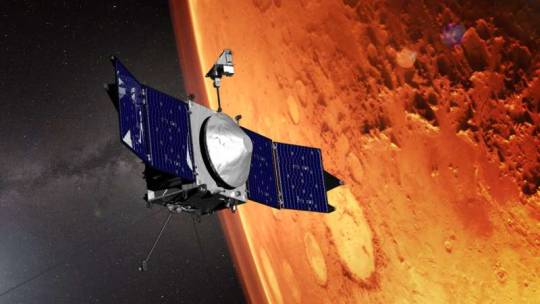

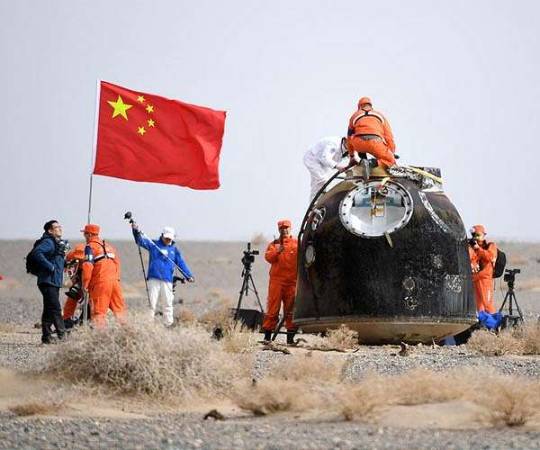

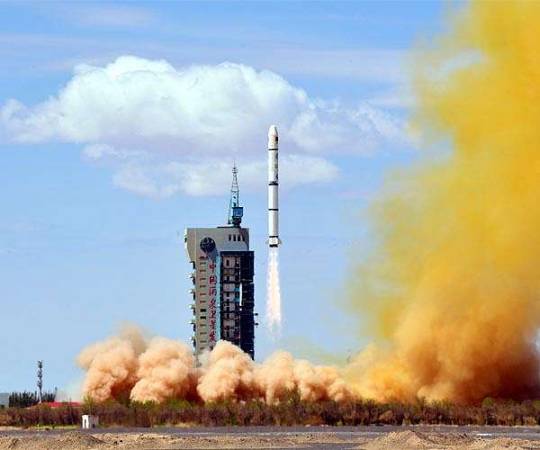


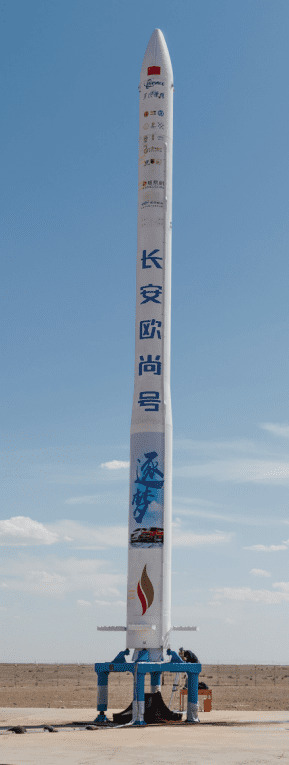
New SpaceTime out Friday: SpaceTime 20220617 Series 25 Episode 66 Mars probe MAVEN back in service following a major glitch NASA’s MAVEN spacecraft is finally back in operation after defaulting into an emergency safety mode in February. Mission managers eventually traced the problem to its Inertial Measurement Units which are responsible for navigation. Unravelling the mystery of brown dwarfs Astronomers have discovered five brown dwarfs -- objects that fill the gap between the largest planets and the smallest stars. The five reported in the journal Astronomy & Astrophysics will provide new clues about how these rare objects are formed and evolve. Three new crew board China’s space station Three Chinese taikonauts have arrived safely aboard Beijing’s new Tiangong space station for what will be a six month mission to complete construction of the orbiting outpost. The trio blasted off in their Shenzhou-14 capsule aboard a Long March-2F rocket from the Jiuquan satellite launch center in northwestern China's Gobi desert. The Science Report A rapid decline in Omicron-specific antibody levels only weeks after the second and third doses. A plant-based diet can reduce the risk of developing type 2 diabetes. Scientists develop a living human skin for robots. Skeptic's guide to life after death SpaceTime covers the latest news in astronomy & space sciences. The show is available every Monday, Wednesday and Friday through Apple Podcasts (itunes), Stitcher, Google Podcast, Pocketcasts, SoundCloud, Bitez.com, YouTube, your favourite podcast download provider, and from www.spacetimewithstuartgary.com SpaceTime is also broadcast through the National Science Foundation on Science Zone Radio and on both i-heart Radio and Tune-In Radio. SpaceTime daily news blog: http://spacetimewithstuartgary.tumblr.com/ SpaceTime facebook: www.facebook.com/spacetimewithstuartgary SpaceTime Instagram @spacetimewithstuartgary SpaceTime twitter feed @stuartgary SpaceTime YouTube: https://www.youtube.com/c/SpaceTimewithStuartGary SpaceTime -- A brief history SpaceTime is Australia’s most respected astronomy and space science news program – averaging some three million downloads globally every year. The show reports on the latest stories and discoveries making news in astronomy, space flight, and science. SpaceTime features weekly interviews with leading Australian scientists about their research. The show began life in 1995 as ‘StarStuff’ on the Australian Broadcasting Corporation’s (ABC) NewsRadio network. Award winning investigative reporter Stuart Gary created the program during more than fifteen years as NewsRadio’s evening anchor and Science Editor. Gary’s always loved science. He studied astronomy at university and was invited to undertake a PHD in astrophysics, but instead focused on his career in journalism and radio broadcasting. He worked as an announcer and music DJ in commercial radio before becoming a journalist and eventually joining ABC News. He wrote, produced and hosted StarStuff from its inception, consistently achieving 9 per cent of the national Australian radio audience based on the ABC’s Neilsen ratings survey figures for the five major Australian metro markets: Sydney, Melbourne, Brisbane, Adelaide, and Perth. The StarStuff podcast was published on line by ABC Science -- achieving over 1.3 million downloads annually. However, after some 20 years, the show finally wrapped up in December 2015 following ABC funding cuts, and a redirection of available finances to increase sports and horse racing coverage. Rather than continue with the ABC, Gary resigned so that he could keep the show going independently. StarStuff was rebranded as “SpaceTime”, with the first episode being broadcast in February 2016. Over the years, SpaceTime has grown, tripling its former ABC audience numbers and expanding to include new segments such as the Science Report -- which provides a wrap of general science news, weekly skeptical science features, special reports looking at the latest computer and technology news, and Skywatch – which provides a monthly guide to the night skies. The show is now published three times a week and is also available from the United States National Science Foundation on Science Zone Radio, and through both i-heart Radio and Tune-In Radio.
#space#science#Astronomy#physics#news#nasa#esa#asa#starstuff#spacetimewithstuartgary#spacetime#abcstarstuff#abc starstuff#universe#galaxy#star#planet#moon#rocket#astronaut#telescope#cosmos#Black Hole
19 notes
·
View notes
Link
During the last full week of April, forthcoming launches include two Starlink missions planned on Monday and Friday, and another two more Falcon 9 flights lifting customer satellites. The first of these is the delayed WorldView Legion 1 & 2 mission which was originally due to fly last week and is now scheduled for Wednesday. The first Starlink mission of the week will also see another milestone reached with the 300th landing of a Falcon 9 booster on the Group 6-53 mission. The fifth Electron to launch this year will carry two demonstration missions into two notably different orbits on Wednesday. One of the two demonstrations being hoisted by Rocket Lab is a demonstration of a novel solar sail developed by NASA and powered by the pressure of sunlight acting upon the surface of the sail. The week will also deliver a crewed launch on Thursday when the Shenzhou 18 mission sends three more taikonauts to the Tianhe core module of China’s Tiangong space station. The number 13 resonates this week, with Shenzhou 18 being the 13th crewed mission of the Chinese space program, and Falcon 9 looking on course to repeat its current record of 13 flights in a month. This is reliant on the Galileo satellite mission, which has not yet been given a firm launch time and is currently scheduled to fly no earlier than Sunday, April 28. B1060 will be making its 20th and final flight and was the first booster to be recovered 13 times back in June 2022. This will be the first time a Falcon 9 single first stage has been expended since November 2022. Assuming the Galileo mission does launch this week, it will be the 82nd orbital launch of the year. This is 18 more than the count on the equivalent date last year, and largely due to SpaceX’s remarkable Falcon 9 launch cadence. Coincidentally 13 years ago this week Shuttle Endeavour was also ready on the pad for its final mission (STS-134), and the penultimate one for the Shuttle program. A malfunction on one of the auxiliary power units caused the launch to be scrubbed and delayed into May, however. This time last year there had also been the same number of Starship launches for the year so far — it’s been over a year now since Starship’s maiden flight back on April 20, 2023, on the IFT-1 mission. It is also ten years this week since the company achieved the first successful propulsive ocean touchdown of a liquid rocket engine orbital booster on the CRS-3 mission and the first Falcon 9 which flew with landing legs. Booster B1076-12 landed on droneship Just Read the Instructions, during the Eutelsat 36D mission in March 2024. (Credit: SpaceX) Falcon 9 Block 5 | Starlink Group 6-53 The first Starlink mission of the week is scheduled to launch from SLC-40 at the Cape Canaveral Space Force Station on Monday, April 22 at 6:40 PM EDT (22:40 UTC). The payload is another batch of 23 Starlink v2 Mini satellites massing around 16,800 kilograms and heading into an initial 285 by 293-kilometer orbit, inclined by 43 degrees. The booster for this mission has not yet been declared but is expected to land on the autonomous droneship Just Read the Instructions around 604 kilometers further downrange, while support ship Bob will recover the fairings. Significantly this will be the 300th landing of a Falcon 9 booster, and the 226th since the last unsuccessful one. These Group 6 missions continue, at least for the time being, to launch in numerical order except the missing Group 6-50 mission which remains unscheduled at present. This will be the 158th launch dedicated to Starlink overall and the 84th for the Gen2 series. SpaceX has successfully launched 24 Starlink satellites in a single batch in the past and has declared a desire to extend this number further to 28 in a single batch by the end of the year. Starlink launches from the east coast are expected to focus on this pad soon while LC-39A is prepared for the GOES-U launch on Falcon Heavy in June. As the week begins and before this flight, SpaceX has launched a total of 6,258 Starlink satellites, of which 406 have re-entered and 5,206 have moved into their operational orbit. Electron is prepared at LC-1 in Mahia Peninsula. (Credit: Rocket Lab) Electron / Curie | Beginning of the Swarm Rocket Lab is due to launch the fifth Electon of the year and its 47th mission overall on Wednesday, April 24 for the Beginning of the Swarm mission. Lift-off is scheduled at the start of an 85-minute window at 09:30 NZST (21:30 UTC on the 23rd) from pad LC-1B in the Mahia Peninsula of New Zealand. Two different payloads are sharing a ride for this mission. Firstly, NeonSat-1 is a demonstration mission ahead of the planned constellation of high-resolution optical satellites which would begin to launch from 2026 onward. The satellite was developed by the Korea Advanced Institute of Science and Technology and its Satellite Technology Research Center which launched Korea’s first satellite (KITSAT-1) 32 years ago. This Earth observation satellite will monitor natural disasters along the Korean peninsula, applying artificial intelligence to its high-resolution imagery. It will be deployed 50 minutes into the mission into a circular orbit at 520 kilometers in altitude. Electron’s Kick Stage will then light its Curie engine to raise its altitude to 1,000 kilometers, with a second burn to then circularize the orbit where it will deploy a second payload one hour and 45 minutes into the mission. Render of NASA’s ACS3 Solar Sail in orbit. (Credit: NASA) This is another technology demonstration, developed by NASA’s Ames and Langley Research Centers. This Advanced Composite Solar Sail System (or ACS3) technology demonstration will deploy a solar sail from a cubesat using lightweight booms made from composite materials. As the name implies, this sail will leverage light from the sun and will be propelled by the pressure of sunlight acting upon it. The spacecraft will spend a couple of months in an initial flight and checkout phase before deployment of the booms and reflective sail. The craft needs to be at a sufficient altitude for the tiny force of sunlight that will be applied to the sail to overcome atmospheric drag. At this altitude, this force is said to be roughly equivalent to the weight of a paperclip resting on your palm. The craft will then perform a series of pointing maneuvers to demonstrate orbit raising and lowering which will span weeks, so it could be July or later before any results are known. It is intended that the data from this mission informs the creation of larger solar sails that could efficiently propel satellites for several usages such as communications relays on future crewed exploration missions, early warning satellites, or reconnaissance missions such as to near-Earth asteroids. Reducing mass could help to eliminate heavy propulsion systems and make longer-duration missions more efficient in both energy and cost. The kick stage will fire its engine retrograde one final time to lower its orbit, enabling atmospheric drag to eventually complete the task of deorbiting it, where it will burn up on re-entry. This mission required the addition of extra propellant tanks, extra batteries, and larger gas bottles for the reaction control system on the kick stage. Rocket Lab is moving closer toward the reuse of a recovered Electron first stage. The company announced in early April that the carbon composite first-stage Electron recovered from the Four of a Kind mission in January has entered the production line for final acceptance testing and qualification ahead of a reflight. Encapsulation complete for our 47th mission! NEONSAT-1 (@KAISTPR) and ACS3 (@NASA) are now safely enclosed within Electron’s fairing. The next time this nose cone opens up, these two satellites will be in space! ‘Beginning Of The Swarm’ Mission info: https://t.co/xyg2Ghty8K pic.twitter.com/i25zKlUqNs — Rocket Lab (@RocketLab) April 18, 2024 Falcon 9 Block 5 | WorldView Legion 1 & 2 A Falcon 9 was originally scheduled to launch from SLC-4E at Vandenberg Space Force Base last week on April 17, carrying two satellites massing a total of 1,500 kilograms into a Sun-synchronous orbit. This flight was postponed the day before launch, however, and is now scheduled for this Wednesday, April 24 at the start of a four-and-a-half-hour window at 11:30 AM PDT (18:30 UTC). The booster, which has yet to be confirmed, is expected to return to land on the pad at Landing Zone 4 located around 400 meters away from the launch mount. The WorldView Legion satellite constellation is Maxar Technologies’ next-generation constellation of Earth observation satellites, designed and built in-house at the company’s facilities in Palo Alto and San Jose, California. DigitalGlobe, which was later taken over by Maxar, first announced its selection of SpaceX as the launch provider back in 2018 when the satellites were initially anticipated to launch in two blocks of six. Hardware-based delays, as well as the complexity of the technology, have caused several setbacks. The planned constellation will now consist of six satellites in total, to be launched in pairs and will orbit in polar and mid-inclination orbits. The satellites are the first to utilize a new Maxar 500 series bus platform with better stability, agility, and pointing accuracy. They will occupy an approximately 500-kilometer altitude orbit when fully deployed, providing 30-centimeter high-resolution imagery and eight-band multispectral imagery across 15 revisits per day over the most active regions of the world. The satellites will triple the company’s coverage in 30-centimeter class resolution, capturing five million square kilometers of imagery each day. The satellites are designed with a 10-year lifespan. With @RTX_News, we developed a new telescope for the WorldView Legion satellites. They collect the high-quality images that customers have come to expect from us, but the telescope is smaller and requires less power.More details: https://t.co/PKttctsC39#ittakesalegion — Maxar Technologies (@Maxar) April 11, 2024 Applications will include supporting national security missions for monitoring and surveillance of ground-based potential threats or verifying enforced sanctions and treaties. The satellites also provide a variety of maritime monitoring functions such as the surveillance of natural disasters, pollution, and oil spills through to the detection of illegal fishing, piracy, drug smuggling, or human trafficking. Utilizing artificial intelligence algorithms, the WorldView Legion satellites can support the ability to detect, identify, and respond quickly to suspicious activities. Maxar worked with its instrument partner Raytheon to develop a smaller telescope that requires less power. Chang Zheng 2F/G | Shenzhou 18 China is sending three more taikonauts from the People’s Liberation Army Astronaut Corps to the Tianhe core module of China’s Tiangong space station on Thursday, April 25. Lift-off is expected near the start of a 40-minute launch window at 12:59 UTC from Site 901 (SLS-1) at the Jiuquan Satellite Launch Center. The crew is expected to arrive at the space station around seven hours later. Shenzhou 18 will be the 18th mission of the Shenzhou (“divine craft”) program and the 13th of these to be crewed. As with other missions in this series, the vehicle will be the Chang Zheng 2F which is a human-rated two-stage version of the 2E, which itself was derived from the 2C. The vehicle was rolled to the pad last week on April 17. Shenzhou 18 CZ-2F/G rolled out to the pad – April 2024: (Credit: CCTV) Active since October 2011, the Chang Zheng 2F/G first launched crew for Shenzhou 8 and this vehicle is flying for the first time this year. It has been over 20 years since Shenzhou 5 launched the first crewed mission for the Chinese space program, becoming the third country in the world to achieve independent human spaceflight. The names of the taikonauts are expected to be revealed at a press conference the day before launch, however, it is anticipated that the commander will be Ye Guangfu who has 182 days of experience in space and previously flew on Shenzhou 13. The taikonauts from Shenzhou 17 have been on the station since last October and are expected to return to Earth in the last few days of April, following a handover ceremony. Falcon 9 Block 5 | Starlink Group 6-54 The second Starlink mission of the week is scheduled to launch from SLC-40 at the Cape Canaveral Space Force Station on Friday, April 26. Lift-off is expected at 6:40 PM EDT (22:40 UTC). Neither the booster nor the droneship have been confirmed yet at the time of publishing, nor the number of Starlink v2 Mini satellites in the payload. Falcon 9 Block 5 | Galileo FOC FM25 & FM 27 In the wake of Starlink Group 6-53 delivering SpaceX’s 300th booster landing earlier this week, this mission will not be attempting a landing and will instead be expending booster B1060 on its 20th and final flight. This booster has supported numerous Starlink missions into Groups 4, 5, and 6 as well as Transporter 6, Galaxy 33 & 34, and the IM-1 mission launching the Nova-C lander, Odysseus. With the company’s continual increase in both launches and recoveries, expending boosters have become rarer. Four months ago, the Falcon Heavy center core B1084 was the last for which there was no recovery attempt on the USSF-52 mission in late December. The last time a single Falcon 9 first stage was expended dates further back to late November 2022 when B1049 was expended on the Eutelsat 10B mission. Booster B1051, which coincidentally launched Galaxy 31 & 32, was also expended just 11 days prior and had continually set milestones as the first booster to be recovered eight, nine, ten, 11, and 12 times. Lift-off for this mission is scheduled for no earlier than Sunday, April 28 from LC-39A at the Kennedy Space Center in Florida. The payload is a pair of satellites massing 1,603 kilograms for the European Space Agency’s (ESA) Galileo constellation targeting a medium-Earth orbit at 23,616 km altitude. Initially expected to be launched on a Soyuz, then moved to the delayed Ariane 6, ESA finally contracted SpaceX to lift this long-delayed payload. Rubidium Atomic Clock development at Leonardo’s headquarters in Nerviano, Milan. (Credit: ESA) This global navigation satellite system is named after Italian astronomer Galileo Galilei and went live in 2016 with the intention that European nations do not have to rely on the US GPS or Russian GLONASS platforms. Usage of the lower precision services is open and free to access, while the higher-precision services have 1-meter precision for positioning and are a paid-for service. These satellites begin to build the next generation of the constellation which will replace older equipment, with the completed constellation hosting 10 satellites in each of three planes. Atomic clocks are a critical pillar in satellite navigation and are already utilized on satellites in this constellation. ESA recently signed a €12 million contract with Leonardo S.p.A to design, develop, and qualify a new technology for pulsed optically pumped rubidium atomic clocks. These experimental models will fly alongside the currently operational clocks used for Galileo services while they undergo in-orbit verification. This could be the last or the penultimate launch from LC-39A before it is reconfigured for Falcon Heavy which is expected to lift the GOES-U mission in late June. These preparations can typically leave a gap of around 40 to 50 days between the previous use of the pad and a Falcon Heavy launch. (Lead image: Render of NASA’s ACS3 Solar Sail render in orbit with sunrise. Credit: NASA) The post Launch Roundup: SpaceX to land its 300th booster, NASA tests a solar sail, and China launches three more taikonauts appeared first on NASASpaceFlight.com.
0 notes
Text
Videos: Space habitat reports – Jan.29.2024
Here is this week's selection of videos and news items about space habitats, living in space, and space settlement. Starts with NASA's latest Space to Ground report for the International Space Station:
https://youtu.be/Na5UYXNsTOY
** Expedition 70 Astronaut Loral O’Hara Answers Boston Student Questions - Jan. 23, 2024 - NASA Video
Aboard the International Space Station, NASA Expedition 70 Flight Engineer Loral O’Hara discussed living and working in space during an in-flight event Jan. 23 with students attending Massachusetts General Hospital and Harvard Medical School in Charlestown, Massachusetts. O’Hara is in the midst of a science mission living and working aboard the microgravity laboratory to advance scientific knowledge and demonstrate new technologies. Such research benefits people on Earth and lays the groundwork for future human exploration through the agency’s Artemis missions, which will send astronauts to the Moon to prepare for future expeditions to Mars.
https://youtu.be/ztpYBr-T8Vk
**Earth views from Cupola by Marcus Wandt - European Space Agency, ESA
Join ESA project astronaut Marcus Wandt inside the seven-windowed cupola, the International Space Station's "window to the world".
The ESA - European Space Agency-built Cupola is the favourite place of many astronauts on the International Space Station. It serves not only as a unique photo spot, but also for observing robotic activities of the Canadian Space Agency's robotic arm Canadarm2, arriving spacecraft and spacewalks.
Marcus was launched to the International Space Station on the Dragon spacecraft as part of Axiom Mission 3 on 18 January 2024. His two-week mission on board is known as Muninn.
Credits: ESA–M. Wandt
https://youtube.com/shorts/-XEy2D6AE1Q
** Ax-3 Mission Update #1 - Axiom Space
Join us for a #Ax3 mission update. Hear from Alper Gezeravcı and Michael López-Alegría as they talk about settling on the International Space Station and what they brought with them from home on their mission.
https://youtu.be/zJlmrWDkVBs
** Ax-3 Mission Update #2 - Axiom Space
Hear from Michael López-Alegría and Walter Villadei as they discuss how they prepare meals in zero gravity.
https://youtu.be/EIdjBnX0vec
- Axiom Space news:
- Boryung Corporation, Axiom Space Announce Joint Venture to Revolutionize Space Industry in Korea | Axiom Space - Jan.12.2024
- Axiom Space and Boryung Corporation Announce Joint Venture | SpaceWatch.Global - Jan.26.2024
- Testing of Next-Gen Spacesuit Underway | Axiom Space - Jan.9.2024
** Gravitics demonstrates the large scale of the StarMax habitat module: Building Bigger: 54 Humans in One 8-meter Gravitics Module | Gravitics - Jan.25.2024
Gravitics, Inc., an aerospace manufacturing company, demonstrated that it can fit 54 people, with room to spare, inside its 8-meter “StarMax” module mockup. The exhibit, a 1:1 scale space station module cutaway, is a tangible example of Gravitics’ vision for large and efficient space environments. The 8-meter mockup enables engineers, businesses, and researchers to plan for and visualize new opportunities for valuable activity in space.
A single Gravitics 8-meter module provides roughly half of the entire usable volume of the International Space Station (ISS). The ISS spans 109-meters and is currently operating with 16 pressurized modules that can support a crew of up to 7 astronauts for long-duration missions. The Gravitics 8-meter module illustrates why it will become a key building block for the next generation of space stations, holding 54 people within its hull only using “ground floor” volume.
Largest interior volume in a standalone spacecraft, ever. Human shown for scale, plus 53 more pic.twitter.com/f9GXjkqZwN
— Gravitics (@GraviticsInc) January 25, 2024
** Tiangong space station crew moves cargo from newly arrived Tianzhou-7 spacecraft - VideoFromSpace
The Shenzhou-17 astronauts crew aboard the Tiangong space station moved cargo out of the Tianzhou-7 spacecraft after it arrived.
https://youtu.be/uZPybyTUJ2I
** Other news and articles:
- Mission Teams Target Tuesday for Launch of Cygnus Cargo Mission| Space Station/NASA - Jan.29.2024
- Economic benefits from space mining | Space Settlement Progress - Jan.28.2024
- China Readies Next Space Station Crews | Leonard David - Jan.25.2024
- Overview for NASA’s Northrop Grumman 20th Commercial Resupply Mission | NASA - Jan.25.2024
- 40 Years Ago: President Reagan Directs NASA to Build a Space Station | NASA - Jan.25.2024
- Sierra Space is blowing up stuff to prove inflatable habitats are safe | Ars Technica - Jan.23.24
- UAE starts historic Lunar Gateway project | SatellitePro ME - Jan.22.2024
* Interview with Dr. Peter Hague | The Space Show - Jan.28.2024
Peter was back with us to discuss several of his Substack blog posts, especially the one that focused on the business case for civilization and large projects such as space settlement. Peter also talked about his petition to the UK government for Starship to launch from the UK plus other topics. Read the full summary of the program at www.thespaceshow.com for this date, Sunday, January 28, 2024.
https://thespaceshow.com/sites/default/files/shows/4154-BWB-2024-01-28.mp3
** Highlight: Egypt - Farming - Jan 27, 2024 - 10:38 UTC - ISS Above
NASA EHDC6 Live views of the Earth from the International Space Station
https://youtu.be/go_vRGZP43s
** Highlight: Baton Rouge LA - MS - Birmingham AL - Jan 29, 2024 - 12:23 CST - ISS Above
https://youtu.be/nlujtnANAgs
** Live Video from the International Space Station (Official NASA Stream) - NASA
Watch live video from the International Space Station, including inside views when the crew aboard the space station is on duty. Views of Earth are also streamed from an external camera located outside of the space station. During periods of signal loss due to handover between communications satellites, a blue screen is displayed.
The space station orbits Earth about 250 miles (425 kilometers) above the surface. An international partnership of five space agencies from 15 countries operates the station, and it has been continuously occupied since November 2000. It's a microgravity laboratory where science, research, and human innovation make way for new technologies and research breakthroughs not possible on Earth. More: https://go.nasa.gov/3CkVtC8
Did you know you can spot the station without a telescope? It looks like a fast-moving star, but you have to know when to look up. Sign up for text messages or email alerts to let you know when (and where) to spot the station and wave to the crew: https://spotthestation.nasa.gov
https://www.youtube.com/live/xAieE-QtOeM?feature=share
====

ISS after undocking of STS-132
=== Amazon Ads ===
Lego Ideas International Space Station
21321 Toy Blocks, Present, Space, Boys, Girls, Ages 16 and Up
====
Outpost in Orbit:
A Pictorial & Verbal History of the Space Station
Read the full article
0 notes
Text

On cue the crew of Shenzhou 17 was announced today (25 Oct), a day before launch. The Commander will be Senior Colonel Tang Hongbo of the PLAAF, aged 48. He was selected in 2010 (China Group-2) and previously flew onboard Shenzhou 12. That was the first mission to Tiangong which then only consisted of the Tianhe core module. This raises the possibility he will oversee the arrival of the second core module, Tianhe-2 (presumably), however an official said today they would first launch the Xuntian crew tended free flying space telescope before the 'extended module'. Tang Hongbo will be the first Chinese astronaut to visit Tiangong for a second time.
The other two crew are launching on their first mission and little information has been released about them. Operator Tang Shengie (no relation to Hongbo I presume), aged 34, is also a pilot in the PLAAF but was selected in 2020 (China Group-3) the third crew member is Jiang Xinlin, possibly a research engineer or payload specialist because he is said to be a 'professional tank driver and pilot with 1,000 hours of flight time'... that's a lot of flight hours for a tank driver. So maybe he is an army test pilot (does not say what kind of aircraft), they did not say he is in the PLAAF or any military service. He was also selected in 2020 (Group-3).
Other snippets of information from the press briefing... Shenzhou 16 will undock and land on 31 October, but before it departs the crew will photograph the assembled Chinese Space Station in HD, presumably from the orbital module of Shenzhou 16.
The new crew, during what will be CSS Expedition 6, will conduct an EVA and perform 'experimental maintenance' on the station for the first time (as opposed to outfitting and equipment testing), they suggested this may be associated with the solar arrays. I wonder if they are planning to move the original wing like arrays of Tianhe 1, now somewhat obscured by the two science modules, to the ends of the large arrays on the ends of the two science modules, as depicted earlier in some illustrations of the completed station. Presumably they would have to retract at least two of the big arrays to do that, it would be a major task.
In future only one Tianzhou supply ship will visit the station per year instead of two, because from Toanzhou 6 onwards the craft have a bigger payload capacity, in both terms of mass and volume, and also they have improved their inventory management systems.
The selection of Chinese astronaut Group-4 is expected to be completed by the end of 2023 when a further 12 to 14 astronauts will be selected from the current group of finalist which include candidates from Hong Kong and Macau.
In a parallel of NASA's commercial resupply program the CMS (China Manned Spaceflight) program have invited Chinese commercial companies to submit proposals for commercial supply ships for the station using Chinese commercial launchers, four proposals have been selected for further detailed design studies. In addition Universities and car companies have been invited to design lunar rover vehicle, currently 11 industry teams have submitted proposals.
Launch of Shenzhou 17 is scheduled for early Thursday morning our time at 04:14BST, docking will be six hours 30 minutes later, at around 10:45BST at the front axial port of the Tianhe core module.
0 notes
Text
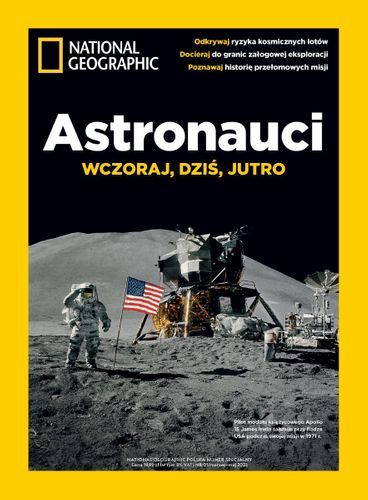
Notatka „National Geographic – Astronauci: wczoraj, dziś, jutro”
Byłem niedawno w Empiku, jakieś dwa tygodnie temu, tak troszkę by zabić czas. Nic ciekawego wtedy z książek nie wpadło mi w oko. Zauważyłem jednak na stanowisku z gazetami półkę z numerami „National Geographic”. Nie czytam periodyków, nigdy nie prenumerowałem żadnego z tytułów. Mój tata tylko dawniej zbierał wydania starej „Fantastyki”. Ale to były inne czasy. Teraz wiedzę można zdobyć o wiele łatwiej, szybciej i praktycznie za darmo używając do tego internetu. Wiadomości też są równie powszechnie dostępne. Pomyślałem jednak, że z ciekawości wezmę ze sobą do domu numer specjalny „żółtej ramki” (01/marzec-maj 2023), która opowiada o historii podboju kosmosu przez astronautów.
Oczywiście tak jak wspomniałem, mógłbym to wszystko, a nawet więcej wyszukać w internecie. Za tą cenę (20 zł) równie dobrze mógłbym znaleźć intrygujący i znacznie większy tom w antykwariacie Tezeusz. Jednak nie chodzi o przeliczanie rozrywki na współczynnik długości do ceny (tutaj zawsze gry wypadają najlepiej, nie licząc serwisów streamingowych). Ciekawiło mnie, jak się taką gazetę czyta, mała fanaberia, by zobaczyć, jak to z gazetami jest. Nie będę ukrywać, że skład drukarski i obrazki też do mnie dużo przemówiły, podobnie jak temat.
Więc, idąc do samego tematu, jest to opowieść o historii astronautyki, podzielona na pięć rozdziałów. Ogniskiem są tutaj postacie pierwszych śmiałków, którzy mieli okazję po raz pierwszy zobaczyć Ziemię, Księżyc i czerń kosmosu z takiej perspektywy, o której ludzkości się nawet nie śniło. Dostajemy więc opowiadania o pierwszych śmiałkach – Gagarin, Shepard, Projekt Mercury, o wyścigu na Księżyc - Projekt Gemini, Apollo, Wosochod, o pierwszych spacerach kosmicznych i wiele mniej znanych ciekawostek. W następnym rozdziale też jest mało o ZSRR, w końcu to Amerykańska gazeta. Jednak możemy poznać szczegółową historię programu promów kosmicznych, pierwszych kobiet w kosmosie, jak i obu tragedii: Challenger (1986) i Columbia (2003). Czwarta część poświęcona jest stacjom kosmicznym. Tu najwięcej doświadczenia mieli sowieci, których siedem stacji Salut (i niejawnie wojskowe Ałmaz włączone pod przykrywką w program cywilny) było pierwszymi tego typu obiektami. Często nieudanymi. Później zastąpione zostały przez długożyjącą stację Mir (DOS 7). Amerykanie w tym czasie wystrzelili swój obiekt – Skylab. Mamy też opowieści o ISS, czyli Międzynarodowej Stacji Kosmicznej, oraz o trzech „Niebiańskich Pałacach” programu Tiangong (dwie pierwsze były prototypami, a trzecia, już bez numeracji wystrzelona w 2021 jest normalną jednostką).
Ostatnie strony poświęcone są komercjalizacji kosmosu i przyszłości astronautyki. Firmy SpaceX, Blue Origin i Virgin Galactic, a także inne mniejsze podmioty, ścigają się, by uszczknąć jak najwięcej dla siebie z tego tortu. Oczywiście każdy patrzy na kolejny „wielki krok dla ludzkości”, którym jest przejście się człowieka po Marsie. Jednak zanim to nastąpi, czego już nie można znaleźć w tej stustronicowej gazetce, to obok komercyjnego wyścigu kosmicznego mamy coś, co można nazwać „drugi wyścig kosmiczny/księżycowy”. Pod tą moją nazwą ukrywam wszystkie misje różnych krajów patrzących na księżyc. Załogowe, jak i te robotyczne. Ameryka rozkręca się z programem Artemis, Chiny wysyłają łaziki (np. Chang’e 5 z przywiezionym przez niego w 2020 regolitem księżycowym), a w dwa tygodnie temu (23 sierpnia) indyjski lądownik Vikram z misji Chandrayaan-3 dotknął powierzchni naszego naturalnego satelity.
Gazetę całkiem przyjemnie się czytało, bo w końcu od tego wyszedłem w tym poście, ale miałem też okazję na podzielenie się przemyśleniami. Obecnie bowiem żyjemy w drugim złotym okresie eksploracji kosmosu. Ten moment jest chyba jednym z najlepszych, by zacząć patrzeć w górę. Czekam ze zniecierpliwieniem na Sławosza w kosmosie oraz (jak zapowiedziano) streamów na żywo programów Artemis 2 oraz z samego powrotu na srebrny glob w ramach Artemis 3. To by było na tyle ode mnie.
Miłego,
Adiabat
07.09.2023
1 note
·
View note
Text
화융 다시 보기 1화~36화
중드 화융 다시 보기 1화~36화 드립니다.
화융 다시 보기 1화~36화 링크 <
더쿠 에서도 인기 있습니다. 쥐징이 화융 출연합니다.



네팔의 민주주의, 거버넌스 및 안정성에 대한 어려운 도전과 다루기 화융 다시 보기 1화~36화 힘든 양자 간 자극에도 불구하고 네팔과 인도 총리는 실용적인 접근과 상호 민감성이 양자 관계를 다시 활성화할 수 있음을 보여주었습니다.
세계적으로 유명한 Jaipur Foot의 제조업체인 Bhagwan Mahaveer 화융 다시 보기 1화~36화 Viklang Sahayata Samiti(BMVSS)는 금요일 최근 Odisha에서 발생한 세 대의 열차 충돌로 다리를 잃은 승객들에게 의족을 제공하겠다고 제안했습니다. 의족 장착 시설은 Bhubaneswar 근처 BMVSS의 Khordha 센터에서 무료로 제공됩니다.
마드라스 고등법원은 법원이 구성한 위원회가 M.K. 금요일에 스탈린은 화융 다시 보기 1화~36화 타밀 나두 정부가 주지사 R.N. Ravi는 주 의회에서 통과된 여러 법안에 대한 동의를 보류했습니다.
“우리도 법정에 접근할지 여부에 대해 법률 전문가와 상의하고 있습니다. 주의회.
N. Anand Venkatesh 판사는 HR&CE(Special Government Pleader) N.R.R. Arun 화융 다시 보기 1화~36화 Natarajan은 6월 19일까지 특정 사원의 Archaka/Sthanigar 직위 후보가 해당 사원에서 따르는 Agamic 관행에 대해 훈련을 받았음을 인증하는 수석 사제가 발행한 인증서 사본을 생성합니다.
BMVSS 설립자 겸 회장 D.R. Mehta는 부상이 치유되는 데 시간이 걸릴 수 있기 화융 다시 보기 1화~36화 때문에 사고 피해자는 절단 후 3개월 후에 장비를 받을 수 있을 것이라고 말했습니다. 또는 Khordha에 있는 BMVSS의 이동식 작업장에서 오디샤의 여러 도시와 마을에 도달하여 절단 환자를 지원할 수 있습니다.
Mehta 씨는 Ashwini Vaishnaw 철도부 장관에게 보낸 편지에서 제안을 했습니다. "환자가 우리 영구 센터가 있는 다른 주에 있는 경우, 우리는 이 센터에서 사지 부속품을 기꺼이 마련할 것입니다."라고 그는 말했습니다.
푸쉬파 카말 다할 프라찬다(Pushpa Kamal Dahal Prachanda) 네팔 총리의 현 임기 취임 화융 다시 보기 1화~36화 후 첫 양자 인도 방문은 그런 의미에서 주목할 만하다. COVID-19 이후의 세계가 제시한 도전, 현재의 현실 및 엄청난 기회에 힘입어 인도와 네팔은 정치, 경제, 무역, 에너지, 안보 및 개발 협력을 포괄하는 양자 의제의 화융 다시 보기 1화~36화 전 범위를 검토할 수 있었습니다. 최근 메모에서 전 인도 중앙은행(RBI) 총재인 라구람 라잔(Raghuram Rajan)은 인도의 국내 제조 및 수출을 촉진하는 생산 연계 인센티브(PLI) 계획의 성공에 의문을 제기했습니다. PLI 제도는 2020년 센터에서 도입했습니다. 인도에서 제조하는 회사에 보조금을 지급하는 데 수 백만 루피가 할당되었습니다. 센터는 PLI 계획이 국내 제조업 부문을 부양했다고 믿지만 비평가들은 그 성공에 의문을 제기했습니다. 제조 작업을 화융 다시 보기 1화~36화 위한 PLI 체계가 작동합니까? Arun Kumar와 Nagesh Kumar는 Prashanth Perumal J가 중재한 대화에서 질문에 대해 논의합니다. 발췌 편집:
Arun Kumar는 은퇴한 에코 교수입니다. UPI(Unified Payments Interface)에 의해 촉진된 거래가 화융 다시 보기 1화~36화 사상 최고치를 기록함에 따라 은행은 일일 한도를 선택했습니다. 이는 2021년에 촉진자인 인도 국립결제공사(NPCI)가 요구하는 이미 부과된 상한선을 뛰어넘는 것입니다. 아이디어는 결제 인터페이스가 계속해서 인기를 화융 다시 보기 1화~36화 얻으면서 더 원활한 기능을 유지하는 것입니다.
현재 사용자는 한 번에 또는 하루 종일 최대 20건의 거래 또는 ₹1 lakh를 하루에 처리할 수 있습니다. 자본 시장, 수금(예: 청구서 등), 보험 및 전방 송금과 같은 특정 거래 범주의 경우 한도는 ₹2 lakh입니다. 2021년 12월 UPI 기반 ASBA(차단된 금액으로 지원되는 애플리케이션) IPO 및 소매 직접 계획에 대한 한도가 각 거래에 대해 50만 루피로 화융 다시 보기 1화~36화 증가했습니다. 2020년 8월 8일 델리 | 사진 크레디트: SHIV KUMAR PUSHPAKAR
인도 감사관 겸 감사관(CAG) Girish Chandra Murmu가 4년 임기(2019-2023)를 마치면서 세계보건기구(WHO)의 외부 감사관으로 재선임되었습니다. 2024년부터 2027년까지. .
Murmu 씨가 재무, 규정 준수 및 금전적 가치 감사를 수행하는 외부 감사인으로 있는 유일한 UN 기구는 화융 다시 보기 1화~36화 아닙니다. 제네바 국제노동기구(ILO) 외부감사인으로 2024~2027년 임기로 선정된 이후 이번이 그의 두 번째 주요 국제감사 업무다. 63세의 직업 관료는 국제기구들 사이에서 인기 있는 감사인이 될 뿐만 아니라 나렌드라 모디 총리가 구자라트 주를 최고 장관으로 이끌었을 때와 지금은 그 이후로 총리로서 정부에서 중요한 직책을 오랫동안 역임했습니다. 2014.
지금까지의 이야기: 중국은 5월 30일에 첫 민간인을 우주로 보냈을 때 새로운 이정표를 달성했습니다. 화융 다시 보기 1화~36화 페이로드 전문가인 Gui Haichao 교수는 베이징의 Beihang University와 함께 일하고 있습니다.
Gui 씨 외에도 임무 사령관 Jing Haipeng과 우주선 엔지니어 Zhu Yangzhu는 오후 4시 29분 Shenzhou 16 우주선을 타고 중국 Tiangong 우주 정거장에 도착했습니다. 3인조 승무원은 우주정거장에서 5개월간의 임무를 완수해 우주정거장에서 6개월을 지내고 오는 6월 지구로 돌아올 예정인 선전 15호 승무원을 구출할 예정이다. 약 3조6000억 화융 다시 보기 1화~36화 달러 규모의 기업인 JJM(Jal Jeevan Mission)이 인도 전역에 수도관을 통해 식수를 공급했다면 설사로 인한 400,000명에 가까운 사망을 막는 데 성공했을 것입니다. (WHO) 및 Jal Shakti 사역의 위임을 받았습니다.”라고 화융 다시 보기 1화~36화 6 월 9 일에보고했습니다.
또한 이것은 설사로 인한 1,400만 DALYS(Disability Adjusted Life Years)를 방지하고, 그렇지 않으면 주로 여성이 화융 다시 보기 1화~36화 물을 긷는 데 소비했을 시간을 매일 1,010억 달러와 6,660만 시간 절약할 수 있다고 이 연구의 저자는 언급했습니다. . DALY는 완전한 건강 1년에 해당하는 손실을 나타내며 조기 사망(YLL)으로 인한 생명 손실 기간(YLL)과 장애가 있는 기간(YLD)을 설명하는 방법입니다. 모집단의 질병 또는 건강 상태.
현재 약 1,230만 가구(62%)의 수도 연결이 계획이 시작된 2019년의 32억 또는 약 16.6%에서 증가했습니다. 센터는 화융 다시 보기 1화~36화 2024년까지 100% 적용 범위를 달성할 것이라고 주장했습니다. 완전한 기능을 갖춘 수돗물 연결은 일년 내내 1인당 하루에 최소 55리터의 식수를 받는 가정으로 정의됩니다.
WHO 연구는 외삽이며 현재 적용 범위 수준에서 방지된 설사로 인한 사망 수를 계산하지 않습니다. 또한 WHO의 Rick 화융 다시 보기 1화~36화 Johnston 박사와 연구 저자 중 한 명이 The Hindu에 말했습니다. 추정치에 도달하는 데 필요한 데이터의 경우 저자는 UN의 인구 데이터, 2018년 전국 표본 조사 및 JJM에서 수집한 수질 데이터를 사용했습니다.
“현재 매초 식수 연결이 제공되고 있습니다. 다섯 가지 상태 즉, 구자라트, 텔랑가나, 고아, 하리아나, 펀자브 및 3개의 화융 다시 보기 1화~36화 연합 영토 — 안다만 및 니코바르 제도, 다만 디우 및 다드라 나가르 하벨리 및 푸두체리는 100% 커버리지를 보고했습니다. 히마찰프라데시(98.87%), 비하르(96.30%)도 가까운 시일 내에 포화 상태에 도달할 준비가 화융 다시 보기 1화~36화 되어 있습니다. “물과 위생에 대한 투자는 경제적, 환경적, 삶의 질, 건강 등 많은 이점을 가져옵니다. 위생 개입에 1달러를 투자할 때마다 의료비 절감이라는 형태로 4.3달러의 수익을 얻습니다.”
1 note
·
View note
Link
0 notes
Text
390120130 PY200 RING GRADER PARTS TIANGONG

390120130 PY200 RING GRADER PARTS TIANGONG

4110000003S 托架
29130026121 L95样机2
29340027841 连杆
29340019451 发动机左前支架
29070023571 壳体3195250007
6290000395 传动轴总成
4110000290 P-销轴LGB301-120*230*415G-40Cr
29011004671 M22-M18直角接头
6410001957 P-盘 23775853
4110003273080 LG96X 夹木叉使用手册(英)
4120000037001 排气门HA03308
29010067981 O形圈40070005201
4045015021 支架
9100000176 回转操纵杆
4041001423 胶管
29260013531 柴油机油CH-4 15W/40-18L—经适件
6900020819 法兰螺栓 01754-50830
11221201 螺栓GB5782-M12*80flZnyc-10.9-480
26260005951 软管LGB144-106100
29080008381 转向泵吸油钢管
6220001011 活塞杆总成24A610990
3060900768 托架1
6299000059 P-密封条
4110002434008 横梁
6900005901 补水管
LG2912001673A 圆钢
LG7300000974-1 大腔过载补油阀
8G190052010600 直接头
4043003369 仪表台线束
4110000509173 蒸发器封闭海绵3
26170009631 销轴LGB301-120*132*250-1200G
4110004276098 盖板
4110002137086 先导操纵阀JRCVD-02
29240015571 中间轴总成 E6360F
14704777 DECAL_LIFTING_BL_INT_GP_4600KG_25T
4110015916012 接头UNF7/16-M18 MT86D
29340018461 全车水堵(碗型塞)
29170059291 WEATHERSTRIP
11211185 右中围板
29260100861 三菱扩展模块 FX2N-8EYR
26350006421 软管20411-16-05WZ/20491-16-05WZ*FC687-05*8
4120018241 热缩管 Φ5
11211374 工作装置附件
29100032831 电动机
4110002152018 销轴LGB323-50*N*140-1N0G
29290009691 轮式升降机
F29100001051 配重
26240020671 发动机线束总成3724020-2186/A 21300060
4110015164028 停用-螺栓
6242000244 外环齿轮
F15-4120002144 窗棂
29010031031 垫片13033940
Mobile/WhatsApp:0086-1525-4934-126
4110004063032 立板
6420001610 接近开关E2G-M12KN05
29330018461 双变总成 359169
29280009151 支架
4190015470 窗棂
4110000561038 举升联左大腔钢管
6900010355 焊接垫板1
4043000214 变矩器胎具
F71N6-10271 952/952H后车架自检记录质记96-10号
FCYJ 钢管
F44206 骨架油封(喷油泵)
29240011351 PLATE
29120025781 密封件包-经适件
29130010451 固定板
F21Q6-15800 耳环销轴CDP-6A
26241042511 耳形档圈JHP02-11
26330071562 后车架线束
FZ0000564 双锁滑轨总成 LG820
4043000714 阀杆密封124460-11340
7200002546 LG6220履带式挖掘机-60220074A0200
29050010511 马达支架
4110000556250 液位液温计YWZ-125T
6264000197 左挡板 14676462
FZ0000429 挡块
4011001321 左边架
4110001386052 软管LGB165-006080
4110001477011 碗形塞片17-7
4110003380037 E6125F履带式液压挖掘机
6900007074 配(钻头快换J5232)莫氏一号芯体
26171020971 排气门
28300004621 垫片475D-1008026A
4120006235048 密封件包
4120004677 REAR AXLE ASSEMBLY ( volvo 5 ton)
LG2190901482-1 CUSHION_FR
4110000924110 软管
29430102802 散热器进水管
26171019541 垫圈
4120011010 支架
ZJ27130102241 风扇组件(吸风式)S1308010-D399
15403399 飞轮齿环总成
6420002445 右侧门总成
29360017591 停用-胶管
29360014571 防尘套
4120005731 非公路自卸车
A10-4110001060 板
4120004992009 差速器左右壳
4110002409261 径向密封圈组件12188100
4110002510210 信号灯
F23411-93C10F 螺栓GB5783-M6*80EpZn-8.8
29050015191 吸油胶管
11218427 上架JU675
4110002769020 行星架组件GHC-1-2-8839
15008571 桥油管
F21Q6-01220 滚针轴承
29030026661 垫圈20941-62230
29050036441 停用-前照灯QZD-2
6410006117 右后玻璃A0-B2390B
4120008252 右配重盖板总成
26341018601 软管总成
4120010559 差速器右壳 MT86
6900016051 四通分油器(¢8mm)
4120016294047 抱箍
29260039481 海绵
29221006681 前车架附件
11213105 MT86底盘,32立方米翘尾斗
6224000333 机体边盖垫
4120004359 Φ90把
6900020825 PLATE 1613068
11221989 定位销
6410005805 PLATE_SIDE
LG28430000911B 2013款阻燃工作服一套 Y3
29150022031 扭力扳手SP38*22
4110000565186 前围底板 23608282
29310024301 机滤(LG933)
29150030041 油嘴
14405209 链条吊具 4*Φ10*2.5m
LG2607000068101 螺栓15134478 977282
4110002989071 工作装置附件
29010073131 罩壳总成
26360004451 前车架及附属 MT86
4190000951S 后车架
6212000560 LG952线束总成
6410005966 绞链
4190001180 空档信号开关3774010-1141
29290051351 支架
14404586 轴承 6310
4011000497 缸筒总成24A633810
FKC27120103601 空滤器滤芯P812363—经适件
4120016264 镜架
4043000195 碗形塞612600014227
6303003311 减振器
4110000081249 BOLT
29050204451 仪表台线束
4120008516 BLOCK-PLATE E665F
F31Y1-32430 燃油泵1G639-52035
11218326 起吊螺栓0636804003
29240031161 固定支架
4180000078 安全滤芯M3020-1109102
4120009292046 风扇减振器部件 A7311-1308200
4190003110 矩形管横构件
11223622 筋板
29170040371 大腔过载补油阀
29370022341 水散热器S9113079C
7300000559 L968F轮胎式装载机
29170041061 连接线 专用插针 订货号:4220011403
4120002990 大波距散热器总成L933-3C
4110000036153 电热壶
6261000533 500小时保养包
4110003577120 软管
Mobile/WhatsApp:0086-1525-4934-126
4120007132 FUELu001F_DIESEL 0#
4110002316017 板
FZ0000123 门下玻璃密封条
6410007945 导管
28080000660411 加油盖密封圈D02A-328-01+A
26340002191 缸盖垫
4120009636044 六角法兰面螺栓612639000085S
29170057281 机罩后框架总成
4110000025008 进气胶管
4110015184002 拉杆焊接总成
3050900202 支架
4110015676049 小卷纸 心相印
29260039502 弹簧5410-3070
29380022291 齿轮室螺塞装配部件S00011222
4041001952 组合开关(升降平台)
28230002151 从动齿轮轴21050412010
29141008891 夹具5870 350 063
6295000005 开关固定板
F3802967 减振器固定螺栓F04908053
4110015916040 软管20491-18-06TZ/20411-18-06TZ×FC687-06×4
6270000093 REINFORCE CHANNEL STEEL
4110002814 消声器支架1000264359
4110001571013 斗侧板
LG2823000336101 前车架线束
4120001163 桥壳总成 GB91-6*60EpZn-Q235
29170094222 拉杆
4130016115 喷油泵齿条装置
26370000991 二级行星架总成 14884877
6420002474 O形圈 0730.107.099
4110001058034 发动机罩标识包
14544874 LG916发动机罩总成
28120002651 增压进气管
29290022881 垫圈E2201803
4110000557039 后车架JR975
4120017704 调整垫片3.4 mm 134195
26120004111 L956HEV轮式装载机
4120003176109 后车架
29380018571 E6500F履带式液压挖掘机
4110002035014 停用-溢流阀
14407857 破碎头管
11217571 扶手支架
4043004013 活塞环安装工具
4110000172027 螺栓GB5785-M20*1.5*230EpZn-8.8
26141008411 中耐磨板
LG2190901190-1 右支架
6900018805 固定板
17004401 托架总成
4130000873 断路器IC65H 3P D20A
26330012792 厌氧胶
4110000555150 轴用弹性挡圈0630503011H
6212001034 胶管20412-22-08TZ/20442-22-08TZXXCP5S-08X1
E3816215Q39 螺钉-内六角平端紧定24T608161
6420001856 阀支座
7300000473 油封座DB55 303 009 C3089016
29170046431 多路阀至右举升缸大腔钢管 60110362
Mail:[email protected]
3050900170 停用-大臂
F11N6-23310 LG918线束总成(国内)
29310030601 PLATE_CTR BOOM IN RH
29250203111 冷凝器壳体焊合件GKL33-5.0P3-10
29090015241 链轨节8090-GB-00022
29240012701 胶管F462CACF080804-340
6900012769 大功率平面节能灯圣路SL170-8U.C1
4120009421010 防护帽 04213653
7200000851 收录机天线C1-3-0801044
3090900053 回位弹簧销DZ9112440525
26010028231 衬套95*80*L95
11216943 保险丝盒BX2152-1
F11E9-15110 PLC安装板
28100009591 PLATE
2110900271 机丝攻GB3465-m14
FXKAQ-00431 后处理支架
Mail:[email protected]
21909012971 上轴瓦(窄)D30-1005054-L
4120016740 连杆
29240042061 O型密封圈U641A-1J9671+A
1690100292 下缸体总成TF220V22024
4043000036 螺栓组件A61100-10082F0
26290030971 直通接头1CH-18-14 14568837
4120018374 开关电源 明纬NES-25-5 25W 5V5A
29170064721 车体板-06
29261003201 左支撑板
2020900050 螺钉GB70.1-M10*70flZnyc-8.8-480
11220212 保险丝电路标识
29200010621 周转箱盖 都程塑业422*315*15mm
4120006234001 割枪(沪工LJK-40)
4120002038005 油位尺1G608-36410
Read the full article
0 notes
Text
Five space exploration missions to look out for in 2023

- By Gareth Dorrian , Ian Whittaker , The Conversation -
It’s been an eventful year for space exploration, with successes including the completion of Nasa’s Artemis 1 mission (finally), the inauguration of the James Webb Space Telescope, and the completion of China’s Tiangong space station.
2023 is set to be another busy year. Here are five of the most exciting missions to watch out for.
1. Jupiter Icy Moons Explorer
In April, the European Space Agency (Esa) is set to launch the Jupiter Icy Moons Explorer (Juice), in what will be Europe’s first dedicated robotic mission to Jupiter. Juice is due to reach the planet in July 2031 after performing an incredible flight path through the Solar System. The mission will enter into orbit around Jupiter and perform numerous flybys of its large icy moons: Europa, Ganymede and Callisto.
After four years of moon flybys, Juice will then enter into orbit around Ganymede, the largest moon in the Solar System – becoming the first spacecraft ever to reach orbit around the moon of another planet. The icy moons of Jupiter are interesting as they are all believed to host oceans of liquid water beneath their frozen surfaces. Europa, in particular, is regarded as one of the most likely abodes in the Solar System for extra-terrestrial life.
youtube
Juice will be equipped with ten scientific instruments including ice-penetrating radar to study the internal oceans. This use of radar is a practical first step in mapping the sub-surface oceans, paving the way for more exotic future missions involving submersible vehicles – some of which have already been put forward. The launch window runs from April 5 to April 25.
2. SpaceX Starship
Although no date has been announced by aerospace company SpaceX at the time of writing, the first orbital test flight of the super-heavy Starship spacecraft is highly anticipated to occur in early 2023. Starship will be the largest spacecraft capable of carrying humans from Earth to destinations in space (the International Space Station is larger, but it was assembled in space). It will be the most powerful launch vehicle ever to fly, capable of lifting 100 tonnes of cargo to low Earth orbit.
Starship is the collective name for a two-component system consisting of the Starship spacecraft (which carries the crew and cargo) and the Super Heavy rocket. The rocket component will lift Starship to some 65km altitude before separating and returning to Earth in a controlled landing. The upper Starship component will then use its own engines to push itself the rest of the way to orbit.
Several short test flights of the Starship portion of the system have been made with varying degrees of success. But the upcoming flight will be the first time the whole system will be used to reach space as one. This first orbital flight was originally scheduled to launch in September 2022, but has been delayed several times.
3. dearMoon
The long-awaited dearMoon project, which will take members of the public on a six-day trip around the Moon and back, is due for launch on Starship and was originally planned for 2023. The exact date will depend on the successful test of Starship, but has been on the books since 2018. It will be the first true deep space tourism launch.
Financed by business entrepreneur Yusaku Maezawa, a competition was set up to select eight members of the public (and an unknown number of crew) to join Maezawa on the trip – all completely paid for. The winners and criteria used have not been disclosed, although it is suspected the guests may be established or aspiring artists.
This mission will mark a big change in the way we think about space, as previously only astronauts picked using incredibly stringent criteria have been able to go into deep space (note: we are not counting brief 10-minute jaunts up to 100 km). A full trip of several days poses extreme risks, both in terms of health and engineering.
The success or failure of the dearMoon mission could affect whether deep space tourism becomes the next big thing, or it is relegated back to being a pipe-dream.
4. Asteroid explorer returns to Earth
The Origins Spectral Interpretation Resource Identification Security – Regolith Explorer, mercifully more commonly known as OSIRIS-REx, is a Nasa mission to near-Earth asteroid Bennu. A key goal of this robotic mission was to acquire samples of Bennu and return them to Earth for analysis.
OSIRIS-REx is now fast returning to Earth with up to a kilogram of precious asteroid samples stored aboard. If all goes well, the capsule will detach from the spacecraft, enter the Earth’s atmosphere and parachute to a soft landing in the deserts of Utah on September 24. Asteroid sample return has only been achieved once before, by the Japanese Space Agency’s Hayabusa 2 mission in 2020.

Bennu the golden space rock. NASA/Goddard/University of Arizona
Bennu is an approximately diamond-shaped world just half a kilometre in size, but has many interesting characteristics. It is believed to have broken off from a much larger asteroid in the first 10 million years of the Solar System. Some of the minerals detected within it have been altered by water, implying that Bennu’s ancient parent body possessed liquid water.
It also has an abundance of precious metals, including gold and platinum. Finally, Bennu is classed as a potentially hazardous object with a (very) small possibility of Earth impact in the next century.
5. India’s private space launch
While SpaceX is the most prominent private space launch company, there are many others developing their own series of launchers around the world. Skyroot Aerospace, which successfully launched its Vikram-S rocket in November 2022, is soon to become the first private Indian company to launch a satellite.
The rocket itself reached 90km in altitude, a distance that would need to be improved upon to get a constellation of satellites into orbit. Skyroot’s first satellite launch is planned for 2023, with a goal of undercutting the cost of private space launch rivals by producing its 3D-printed rockets in a matter of days. If successful, this could also provide a route for cheaper launches of scientific missions, enabling a faster rate of research.
Clearly, interest in the space sector remains high. With many bold advances and launches due in 2023, we are entering a new phase akin to the “Golden era” of space launches in the 1960s and ’70s.

Gareth Dorrian, Post Doctoral Research Fellow in Space Science, University of Birmingham and Ian Whittaker, Senior Lecturer in Physics, Nottingham Trent University
This article is republished from The Conversation under a Creative Commons license. Read the original article.
--
Read Also
Artemis: NASA’s most powerful rocket ever (video)
0 notes
Text
Chinese Spaceship With 3 Aboard Docks With Space Station
Chinese Spaceship With 3 Aboard Docks With Space Station
BEIJING (AP) — Three Chinese astronauts docked early Wednesday morning with their country’s space station, where they will spend several days overlapping with an already three-member crew to expand the facility to its maximum capacity.
The Shenzhou-15 spacecraft docked with the Tiangong station at 5:42 a.m. Wednesday, about 6 1/2 hours after it blasted off from the Jiuquan satellite launch pad…

View On WordPress
0 notes
Text
Another huge piece of Chinese space junk is falling to Earth. 'Here we go again,' experts say
By Brett Tingley
published about 2 hours ago
Another Chinese Long March 5B rocket body will once again plummet to Earth in the coming days above a yet-to-be-determined location.
Another Chinese launch, another uncontrolled rocket body reentry.
The China Manned Space Agency (CSMA) launched the third and final module of the Tiangong space station on Monday (Oct. 31) atop a Long March 5B heavy-lift rocket. As with previous Long March 5B launches, China did not perform a controlled deorbit of the rocket's core stage after its payload was deployed. That means that, yet again, a 23-ton (21 metric tons) Chinese rocket body will plummet to Earth above a yet-to-be-determined location in the coming days.
0 notes
Text
Problematic Launch Anticipated as China Finalizes Area Station
China’s Lengthy March 5B rocket heading to the launch pad on Tuesday.
Screenshot: CCTV/CNSA
China rolled out its Lengthy March 5B rocket on Tuesday in anticipation of its upcoming liftoff to put the third and last piece of the Tiangong area station in orbit. It’s all very thrilling, however an out-of-control core module will doubtless end result, as was the case on three earlier events.
The heavy-lift rocket was transported to the pad on Tuesday, carrying a 23-ton lab module named Mengtian (which interprets to “dreaming of heavens”). It took about three hours for the Lengthy March 5B to make the almost 2 mile (3 kilometer) journey on the Wenchang Spacecraft Launch Website, in response to China Nationwide Area Administration (CNSA).
On the pad, the rocket will bear last checks and fueling in preparation for its launch. The area company has not confirmed the precise date for launch, however earlier statements counsel the rocket will take off on Monday, October 31, in response to Area.com.
Mengtian will be part of its sister modules Wentian and Tianhe to kind the T-shaped construction of China’s three-module area station named Tiangong (which means “heavenly place”). China’s area company will use the Mengtian lab to conduct varied microgravity experiments associated to fluid physics, combustion science, and area expertise, in accordance to China’s state-run Xinhua. Not like Tianhe, Mengtian doesn’t embrace dwelling quarters for astronauts.
Tiangong is China’s reply to the Worldwide Area Station and is scheduled to be absolutely constructed by the top of the 12 months. The primary module of the area station, Tianhe, launched to orbit in April 2021, whereas Wentian adopted greater than a 12 months later in July 2022.
G/O Media could get a fee
In June, China despatched a crew of three astronauts to the area station the place they’ve spent the previous a number of months overseeing the docking of the 2 modules, along with setting them up and operating assessments. The crew is anticipated to return to Earth in December, after which level the Shenzhou-15 crew will take over.
Much like earlier launches of China’s Lengthy March 5B , the core stage is predicted to carry out an uncontrolled reentry by way of Earth’s environment upon its return. Astronomer Jonathan McDowell from the Harvard-Smithsonian Heart for Astrophysics is “95% sure we will likely be in precisely the identical scenario once more,” he instructed Gizmodo in an electronic mail.
The Lengthy March 5B is infamous for jeopardizing populated areas because it falls again to Earth in a haphazard state. Earlier incidents have taken place in 2020 and 2021 through which particles from the 100-foot-long (30-meter) core stage crashed alongside the western coast of Africa and the Indian Ocean. This previous August, particles from the Lengthy March 5B fell throughout areas in northern Borneo. Mercifully, nobody has been harm, however that doesn’t imply it could’t occur.
China is making enormous inroads in area, however its area company continues to be reckless with regards to its rockets. Rockets are sometimes constructed with mechanisms to regulate their reentry to remoted areas, or sluggish them down as they make their manner again to Earth. If China plans on sending extra of its heavy-elevate rockets to orbit, it wants to begin higher equipping them for the experience again.
Extra: Suspected Particles From Chinese language Rocket Falls Onto Three Indian Villages
Originally published at Irvine News HQ
0 notes